By now, the vast majority of organizations are investing in sales enablement. In fact, recent research found that sales enablement and training is the #1 growth tactic among today’s sales leaders.
It’s easy to see why. Sales enablement – when it’s done well – prepares sellers to overcome challenges, engage buyers, and close more deals. A survey found that 92% of respondents feel that having a dedicated sales enablement team has improved sales performance.
A recent study found that
But sales enablement success just doesn’t happen by chance. Instead, it requires plenty of planning and a strong foundation. It all starts with building a sales enablement framework.
Developing a winning sales enablement framework doesn’t have to be overwhelming. In this blog, we’ll define a sales enablement framework and share a four-step approach to building one that will serve as the foundation for sales enablement success.
What is a sales enablement framework?
Later on, we’ll explore the steps involved in building a sales enablement framework. But first, let’s take a step back to define the term.
A sales enablement framework is the foundation of your sales enablement function. The sales enablement framework outlines how you’ll support your sellers with the right tools, sales training, and resources so you can grow an entire team of top performers who consistently crush quota.
You can also think of it as a sales enablement roadmap. You’ll use this map to effectively enable your sellers so they can reach their full potential and you can achieve maximum revenue growth.
Why is a sales enablement framework important?
When sales enablement was in its infancy, many organizations took an ad hoc approach. For example, a manager might step in to do deal reviews. Or, the marketing team might create a new asset when a sales rep asks for it.
Even today, some organizations continue to take a reactive approach to sales enablement. But it’s not effective or sustainable.
Organizations that take a more formal approach to sales enablement achieve greater impact than those that adopt an ad hoc approach. Building a sales enablement framework is foundational to formalizing your approach to sales enablement.
How to build a sales enablement framework
Sales enablement can have a large, measurable impact on the metrics that matter most, including win rates, quota attainment, and sales cycle lengths. Building a sales enablement framework is the first step towards improving your sellers’ effectiveness and efficiency.
Building a sales enablement framework (or roadmap) from scratch can seem overwhelming. But if you take it step by step, it doesn’t have to be.
Step 1: Research and plan
Alexander Graham Bell is often quoted as saying, “…preparation is key to success.” This certainly rings true for sales enablement.
Research, planning and preparation are the first steps of developing a winning sales enablement framework. This involves several moving pieces, including:
Choose your sales methodology: A sales methodology is a framework that guides how your sellers engage with buyers and articulate the value of your solutions. If you haven’t already, it’s critical to determine which sales methodology is the best fit for your business.
Align key teams: Sales enablement strategies and programs can’t be created in silos. Instead, sales enablement requires close collaboration among teams including sales, marketing, and customer success. When these teams are aligned, everyone understands the larger strategy and the role they play in it. This leads to better outcomes.
One way to ensure alignment is to hold standing meetings with key teams. You might designate a point person to represent each team.
Understand your target audience: Your customers should be at the heart of everything you do. Ensure you thoroughly understand who your target audience is, what challenges they face, and the value your solution delivers.
If you haven’t already, be sure to develop ideal customer profiles, which outline the characteristics of a company that is a good fit for your products or services. You also need to create buyer personas, which are snapshots of the people your go-to-market teams will aim to attract and convert.
Determine your goals: Go-to-market teams should come together to establish sales enablement goals. Remember: your sales enablement goals must align to the greater business objectives.
Stay away from vague goals like “improve team performance.” Instead, set sales enablement KPIs that are specific and measurable. Also, determine which metrics you’ll track to gauge your progress toward your goals.
Take stock of your current state: Take an honest look at the state of your go-to-market team today. Assess their strengths and weaknesses. Also, assess the tools and resources they currently have – and which they may need to drive better performance.
Step 2: Develop and execute your sales enablement framework
You can create your sales enablement framework once you’ve completed the initial step. This framework will outline out the training, tools, and resources your go-to-market teams need to be successful in their roles.
Some examples of tools and resources include:
Sales onboarding: This is the first experience new sellers will have with your organization. It’s a great opportunity to get your reps off to a great start.
Ongoing training and enablement: Onboarding is a great start. But on its own, onboarding isn’t enough to prepare sellers to effectively and efficiently engage buyers.
Things are always changing – including product offerings, marketplace conditions, customer expectations, and competitive landscape. Even the best reps need ongoing sales training and enablement to ensure they’re ready to conquer any deal that comes their way.
One-size-fits-all training won’t cut it. Effective sales enablement and training is that which is tailored to the unique needs of each seller.
Sales coaching: Sales coaching can have a big impact on sales performance. Like training, it must be personalized to each seller’s needs.
Sales content: Sales enablement content helps sellers move prospects through the funnel. With the right sales content management solution, sales reps can easily find the right content for each selling scenario.
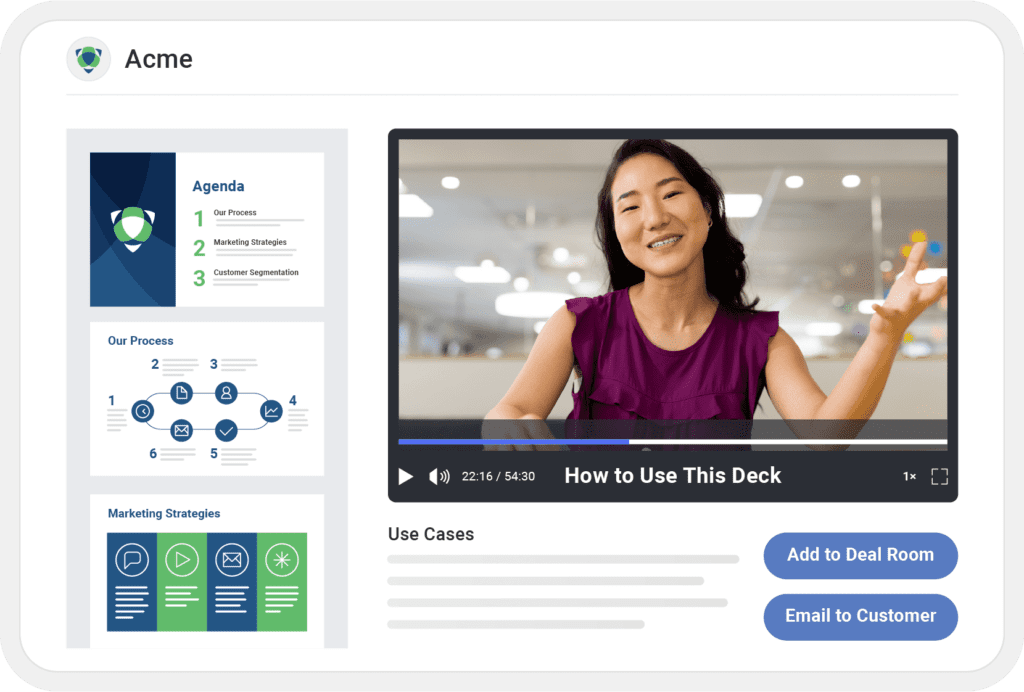
Consider incorporating AI into your sales content strategy. That way, sellers can get content suggestions based on past performance and a prospect’s behaviors.
Role-plays: Role-plays allow sales to practice their skills before money is on the line. With artificial intelligence, sales reps can get feedback on role-plays in real time without having to wait on their manager. In addition, innovative revenue organizations are leveraging AI to develop interactive role-plays in which sellers interact with an AI bot in realistic sales scenarios.
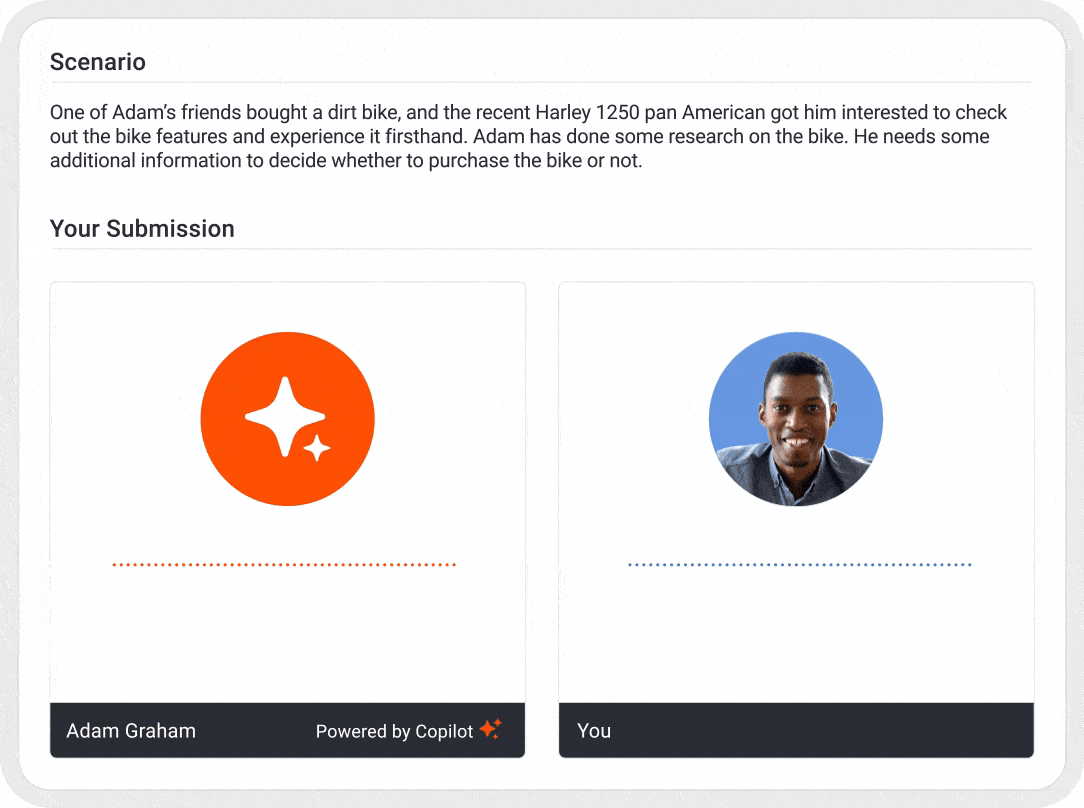
Conversation intelligence: A conversation intelligence solution records sales calls and delivers real-time feedback to sellers. Sales reps can use this feedback to improve behaviors and increase their chances of closing a deal.
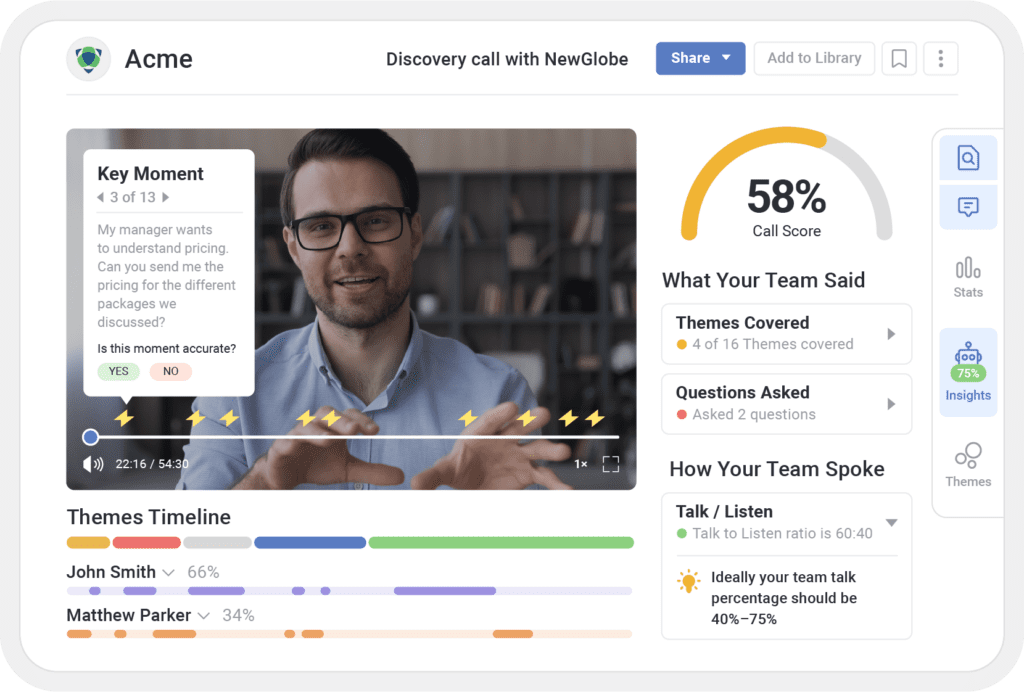
With AI, sellers can also quickly pull insights from sales calls and determine what action to take next.
Once your sales enablement framework and supporting resources are created, you can deliver them to your customer-facing teams.
The right sales enablement technology is critical
Technology is key to building and executing your sales enablement framework and programs.
The right sales enablement (or revenue enablement) software should make it easy for enablement teams to create resources that empower sellers to hone the skills that matter. Sales enablement software should also allow revenue leaders to understand reps’ strengths and weaknesses – and deliver learning paths that address the needs of all sellers.
Choosing the right sales enablement software is also important for your sellers. The easier you make it for sellers to engage with your enablement resources, the more likely they are to do so.
Step 3: Deploy your go-to-market teams
This stage of the sales enablement framework is where the rubber meets the road. It’s where sellers apply the skills and information they’ve learned while interacting with customers.
There are several components of this stage.
Putting learning into practice: Your sellers have used various sales enablement resources to build their skills. Now, it’s time to use those skills with prospective buyers.
Of course, just because sales reps engage with sales enablement programs doesn’t mean their behaviors will improve. Conversation intelligence software enables revenue leaders to understand how each sales rep is performing in the field. Sales managers can use these insights to provide targeted coaching to boost weaker skills.
Using data to drive action: With the right sales enablement framework, strategy, and tools, your sellers can access the data they need to make better decisions.
Consider sales enablement content as one example. Often, sales reps guess which content to use based on gut feeling. With the right sales enablement framework and technology, sellers can tap into data to determine which content will resonate with which prospects.
Sellers can also receive AI-powered recommendations on what to do next with a buyer based on historical data and the prospect’s behaviors.
Step 4: Measure and optimize your sales enablement framework
Remember those sales enablement goals you set back in step one? It’s important to continuously measure your progress towards those goals.
Track KPIs: Be sure to track key metrics to determine how (and whether) your sales enablement framework and program impact results. The metrics you track will vary based on your sales enablement goals.
In addition to tracking metrics across the revenue organization, be sure to determine how different programs are helping teams and even individual reps improve behaviors and sales performance.
Solicit feedback: Don’t shy away from feedback from your sellers. They interact with customers every day and can offer unique insight into what’s working and what’s not.
Optimize accordingly: A sales enablement framework isn’t something to create. Rather, it’s important to continuously leverage data and feedback to optimize your sales enablement framework.
Build a winning sales enablement framework and program with Mindtickle
Technology is a key component of any sales enablement strategy. Some organizations use point solutions, each addressing a specific sales enablement component. But increasingly, teams are streamlining their tech stacks by investing in an integrated revenue enablement platform like Mindtickle.
With Mindtickle, revenue enablement teams can deliver and deliver training and enablement programs that are tailored to the needs of each seller. Mindtickle also features robust sales enablement content management capabilities, which make it easy to equip sellers with the right content for any selling scenario.
With Mindtickle Copilot, the platform’s AI productivity assistant, revenue enablement teams can quickly and easily develop enablement, assessments, and role-plays by inputting key details.
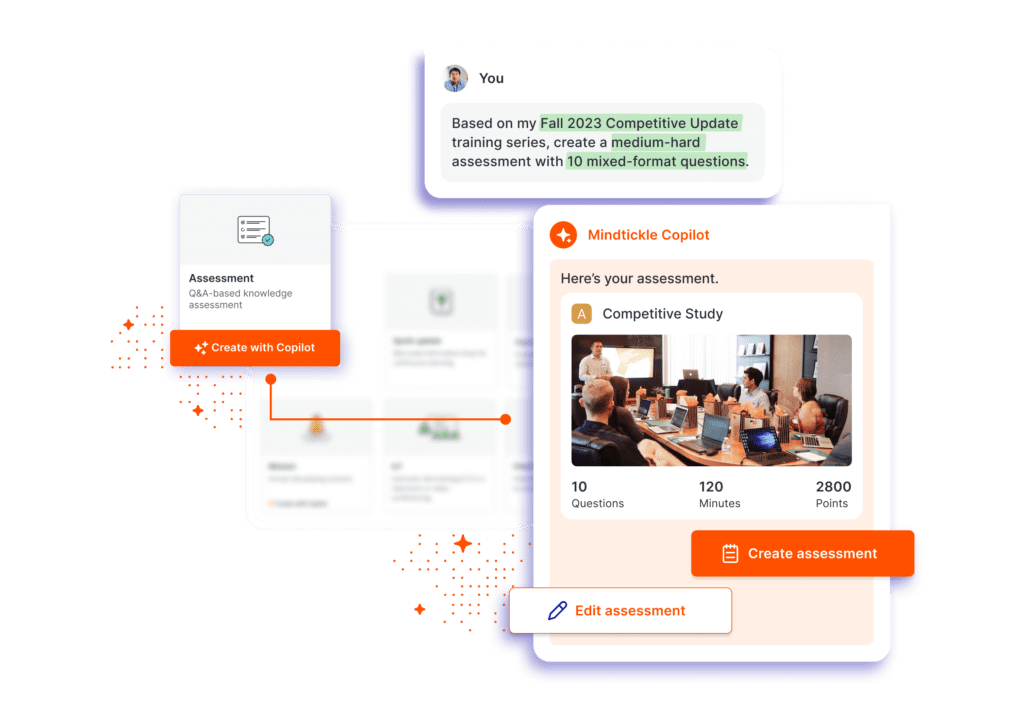
Revenue enablement teams can launch programs quickly, which means they can have a more immediate impact on sales productivity and performance.
Mindtickle provides sales reps with a one-stop shop for everything related to enablement, including sales content, training, coaching, role-plays, conversation intelligence, and more. That means they can spend less time hunting down what they need and more time delivering great experiences that convert prospects to customers.
Mindtickle Copilot streamlines and simplifies the tedious tasks that take up so much of sales reps’ time. For example, sellers can quickly surface insights from call recordings so they can follow up accordingly. Mindtickle Copilot can also suggest next steps to take. For example, the AI sales assistant can suggest sharing a piece of relevant content and even draft a contextual email to accompany the asset.
Today, some of the world’s best revenue organizations depend on Mindtickle to ensure sellers always have what it takes to reach their sales targets. And with Mindtickle Copilot, teams can work even faster and smarter.
See Mindtickle Copilot in Action
Want to see how other orgs are using Mindtickle to make their sellers work smarter so they can focus on closing deals?
Request Your Demo
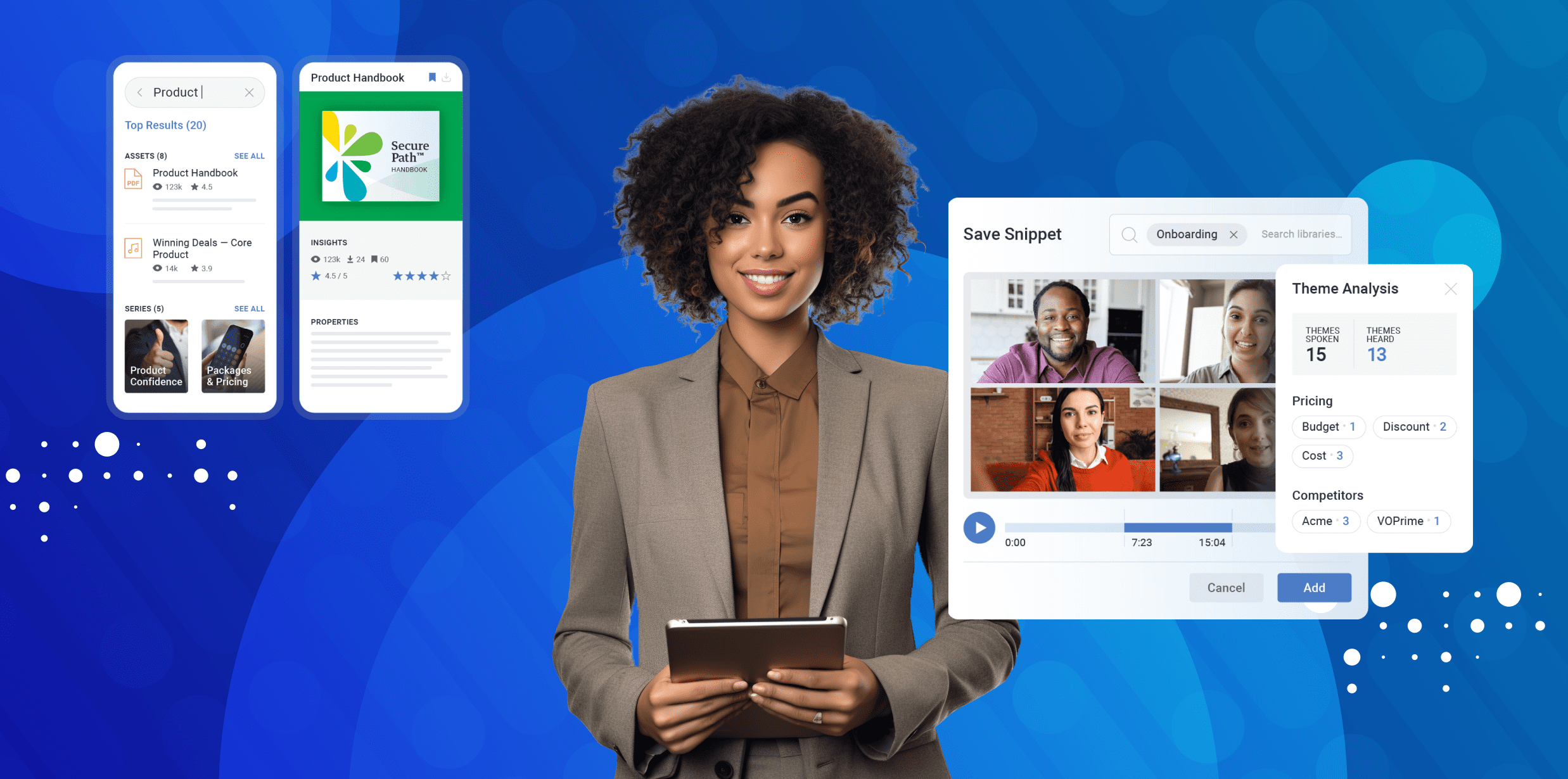
 By Christian Pieper
By Christian Pieper
 By Helen Waite
By Helen Waite

 New to MINDTICKLE?
New to MINDTICKLE? WHO WE HELP
WHO WE HELP COMPANY
COMPANY RESOURCES
RESOURCES